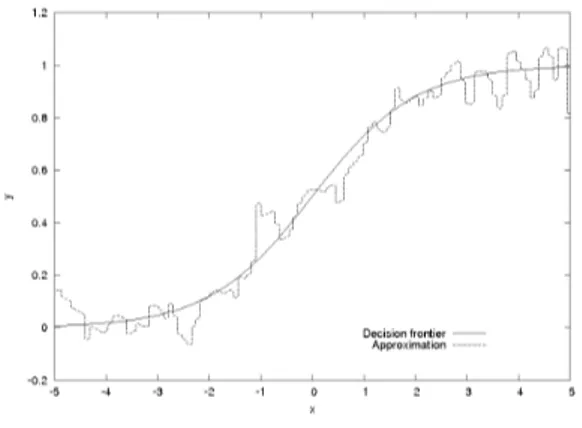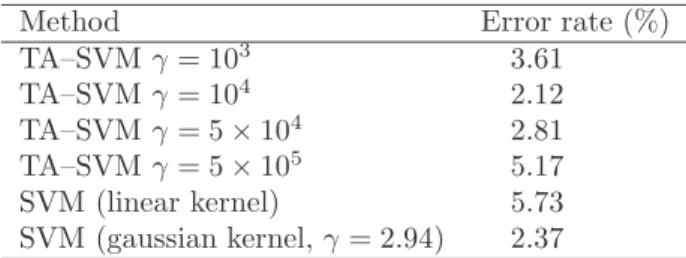Time–Adaptive Support Vector Machines
Texto completo
Figure




Documento similar
With them we could observe the effect of the new regularizer to avoid overfitting and improve test prediction, using the Hard Margin Fused Support Vector Machine (HM-FSVM) model,
Concerning the LTAO and MCAO cases, only the persistent kernel approach has been assessed and the results show that a time to solution below 2ms can obtained for a LTAO system
Models that tend to work well for short‐term projections based on, Support Vector Machines,
Least-Squares Support Vector Machines (LS-SVMs) have been successfully applied in many classification and regression tasks. Their main drawback is the lack of sparseness of the
In these tests we study the training time for the ensemble and for the single SVM as a function of the size of the train set N train and in function of t p.. The tests have been
Recently, new approaches based on Support Vector Machines (SVM) [17] are achieving similar performance, working at the spectral level, and also providing complementary
Expanding our earlier work, we compared two approaches for implementation of adaptive navigation support in e-learning systems (a dedicated interface and an
In fact, data mining techniques have already been used in E-learning systems, but most of the times their application is oriented to provide better support to students; little work